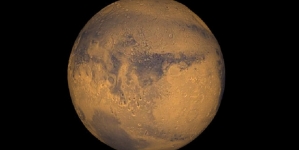-
Tips for becoming a good boxer - November 6, 2020
-
7 expert tips for making your hens night a memorable one - November 6, 2020
-
5 reasons to host your Christmas party on a cruise boat - November 6, 2020
-
What to do when you’re charged with a crime - November 6, 2020
-
Should you get one or multiple dogs? Here’s all you need to know - November 3, 2020
-
A Guide: How to Build Your Very Own Magic Mirror - February 14, 2019
-
Our Top Inspirational Baseball Stars - November 24, 2018
-
Five Tech Tools That Will Help You Turn Your Blog into a Business - November 24, 2018
-
How to Indulge on Vacation without Expanding Your Waist - November 9, 2018
-
5 Strategies for Businesses to Appeal to Today’s Increasingly Mobile-Crazed Customers - November 9, 2018
Astronomers find star with three super-Earths
However, HD219134b’s proximity to the star means that the planet is not capable of supporting liquid water, but could be reminiscent of Earth’s beginnings as a rocky volcanic world covered in flowing molten lava. The system includes as well a giant planet (of small-Saturn type) at 2.1 astronomical units, orbiting the star in a bit more than 3 years.
Advertisement
The HD 219134b can not be seen directly by telescopes, but the star it orbits is visible to the naked eye. Stéphane Udry from the Geneva University, who is further adding that “being able to characterize three transiting super-Earths in a single bright and close system would provide incomparable constraints for planet formation and composition models, in particular for super-Earths”. The planetary system exists in the Cassiopeia constellation.
One of the three super-earths the planetary system contains orbits in front of a star and has a density equivalent to that of earth’s.
HARPS-I, designed and constructed by a world consortium and put in on the Telescopio Nazionale Galileo on the La Palma island in Spain, unveiled the distinctive planetary system round HD219134.
Michael Werner, the project scientist for the Spitzer mission said that transiting exoplanets were worth their weight in gold because they can be extensively characterised.
Furthermore, amid HD219134b’s fellow planets, the second furthest from the star weighs 2.7 times as much as Earth and orbits in 6.8 days, the next is 8.7 times more massive than Earth with a 47-day orbit.
Another reason why HD219134b is thrilling is because it the closet known transiting planet to the scientists and therefore offers them the unique opportunity for further study of the way it has been composed and the atmosphere against the star’s backdrop.
This technique generally requires planets that transit their stars rather rapidly.
‘Most of the known planets are hundreds of light-years away. “This one is practically a next-door neighbor”, said astronomer Lars A. Buchhave of the Harvard-Smithsonian Center for Astrophysics.
The mass of the planet obtained from the bottom-based mostly radial velocities, mixed with the planet radius derived from area observations with Spitzer, yield the imply density of the planet.
The team also found that the two other inner planets are super-Earths.
The measurements that have been calculated by NASA’s Spitzer space telescope had showed that its mass had been 4.5 times higher compared to Earth and 1.6 times larger. But the most exciting part of the discovery are the three super-Earths.
The location of the star HD 219134 (circle) is host to the nearest confirmed rocky planet found to date outside of our solar system. The moment when the three super-Earths are in coplanar configuration.
Advertisement
Certainly, this makes the closest transiting planet ever spotted a not so welcoming life habitat.





























